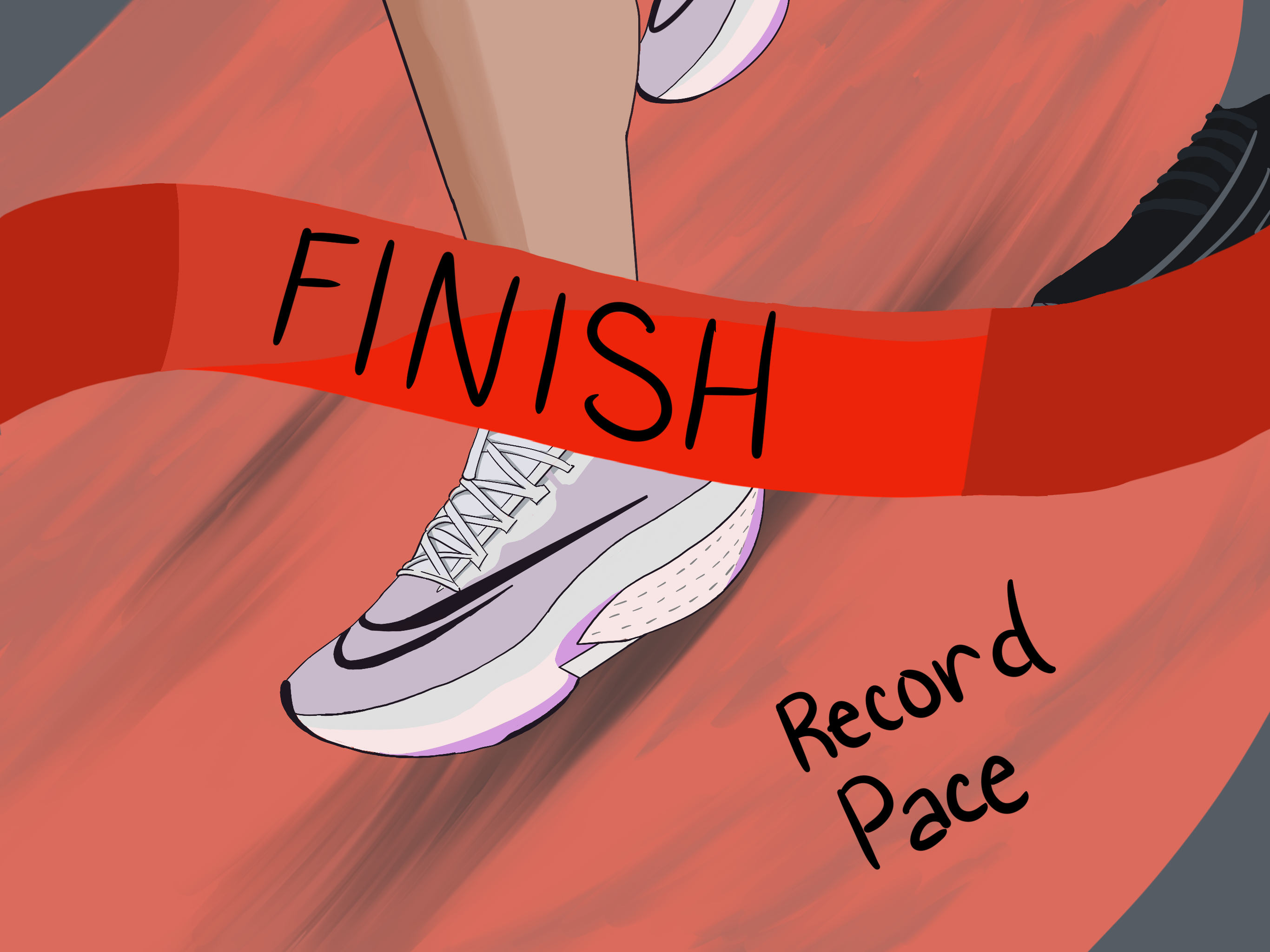Eight runners line up at the Reichsbrücke Bridge in Vienna, Austria, under a maroon Ineos 1:59 banner. It’s October 2019 and each runner sports black jerseys and neon pink shoes, except for the man in the center, Eliud Kipchoge.
Crowds of people to the side jostle for a view. With bright white Nike shoes and a stoic expression, Kipchoge looks forward and sets out to do what others have deemed impossible.
One hour and fifty-eight minutes later, Kipchoge dashes to the finish, pointing and waving at spectators. The clock reads, “Unofficial: 1:59:40,” marking the first successful sub-two-hour marathon effort, equivalent to an average pace of four minutes and thirty-four seconds per mile for 26 miles. Family members, spectators and reporters swarm over and lift Kipchoge up as a wave of ecstasy spreads across the city.
On Kipchoge’s feet are a set of prototype Nike Alphaflys — the latest version of Nike’s super shoes.
The release of the original Vaporfly in 2016 saw scores of records broken for runners wearing the shoes, leading to controversy and the labeling of similar technologies as “technological doping.”
Nike’s shoes contrast with traditional racing flats designed for maximum weight reduction, featuring an energy-returning ZoomX foam. The featured carbon plate acts less like a spring and more as a stabilizer to reduce foot flex. According to results from experiments conducted by The New York Times, Nike and another research group that included a University of Colorado professor, these technologies contribute to roughly a 4% advantage in speed for Vaporfly users.
For Hong Wan, an adult marathon runner who uses Vaporfly shoes for racing, the shoes provide a discernible advantage.
“(The Vaporfly) almost makes you feel like you are propelled forward because the sole is pretty thick,” Wan said. “My pace on that day, on my first run, was 30 seconds faster than I had expected.”
Varsity runner sophomore Kinga Czajkowska said the shoes provide an unfair advantage for those who can afford them, with the Vaporfly costing $250 and the Alphafly costing $275.
“A lot of them are pretty expensive,” Czajkowska said. “That’s a problem. In cross country, of all sports, it’s nice because you don’t need very expensive equipment.”
Sophomore cross country and track runner Stefan Sochacki, who owns more budget-friendly Adidas racing shoes, said affordable alternatives exist. Though less famous than the Vaporfly, the Adidas shoe features similar foam technologies for a lower price.
“For Nike, I’d say it just has a big name that makes it carry a heavy price,” Sochacki said. “It’s not really the technology itself (that drives the high prices) because I think there’s as good shoes (from other brands).”
Despite the controversy, the Vaporfly complies with the current World Athletics stack height standards. World Athletics banned the prototype Alphafly shoes in 2020 but the public Alphafly Next% is race legal.
Czajkowska and Sochacki, as well as cross country and track and field coach Michael Davidson, said the use of the term “technological doping” unfairly compares high-performance running shoes to drug use.
“I wouldn’t put (high-performance shoes) on the same level,” Davidson said. “When you talk about drug enhancement, you’re changing the chemistry of the body to be able to train harder and to be able to do different things that your body can’t normally do. You’re not changing that with a pair of shoes.”
Davidson said athletic training, dedication and preparation are ultimately more important than the shoes runners wear, and high-tech shoes aren’t a replacement for hard work.
“When you get to the elite, (a runner wearing Vaporfly shoes) will be like a professional baseball player using an aluminum bat as opposed to a wooden bat,” Davidson said. “It’s going to give you as much vibration, and it’s going to be a lot stiffer when it hits, so obviously the ball is going to carry a lot further. There’s an advantage, but at the same time, you still have to be able to hit the ball. (Ultimately,) it’s your choice to (use the shoes) or not to.”






